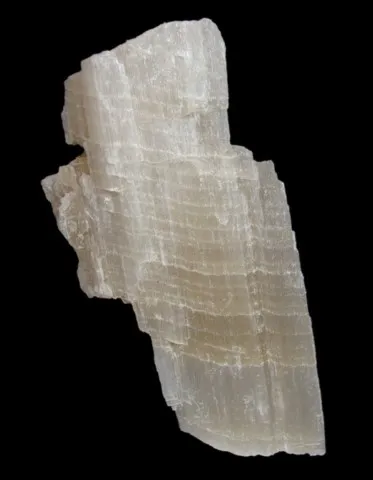NATRON
Class : Carbonates, nitrates, borates
Subclass : Hydrated carbonates
Crystal system : Monoclinic
Chemistry : Na2CO3 10H2O
Rarity : Uncommon to fairly common
Natron is mainly a mineral of evaporitic origin, sometimes present, but more rarely, in volcanic solfataras (Etna, Vesuvius, Italy). It is a hydrated sodium carbonate that forms during the evaporation of sodium-rich lakes (Searles Lake, California, Gobi Desert, China and Mongolia), associated with thermonatrite, trona, gaylussite and calcite. Natron is a very fragile mineral : easily soluble and easily dehydrated to thermonatrite in dry air. Its name comes from the Arabic natrun which designated rock salt, it is a mineral known since Antiquity. It most often appears in efflorescences without distinct crystalline forms, more rarely in rhomboidal tablets with clear cleavage, white to white-gray in color, sometimes yellowish. It is a notable sodium ore.
Main photo : Natron from Wyoming, USA © Steve Hardinger
Natron in the World
Twinning
Twins are known on {001}.
Fakes and treatments
No fakes recorded for this mineral species.
Hardness : 1 to 1.5
Density : 1.478
Fracture : Conchoidal
Streak : White
TP : Translucent to transparent
RI : 1.405 to 1.440
Birefringence : 0.035
Optical character : Biaxial -
Pleochroism : None
Fluorescence : None
Solubility : Acids, water
Magnetism : NoneRadioactivity : None

